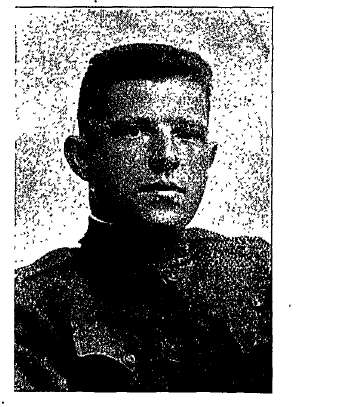
If you read a Collegian issue from 1918, half of the articles would be coverage of World War I. Now, 100 years after the end of the war, the names of those who served, including seven who died, have been mostly forgotten.
Of the approximately 500 students on Hillsdale’s campus in 1919, 368 enlisted in the armed services, Red Cross, YMCA, or YWCA. One hundred and fifteen were in active service overseas, while 109 were in the Student Army Training Corp (SATC).
“The part which Hillsdale College played in the war cannot be measured in men and women,” an April 1919 article of The Collegian said. “The spirit which sent them will continue to move and work among us, influencing every Hillsdale student to bigger and better things.”
College archivist Linda Moore said students and faculty alike did a variety of things to help the war effort.
“A couple of college girls had gone over in a version of the United Service Organizations, entertaining the troops,” Moore said. “There were a variety of ways that people served, but not necessarily in the military. There were people here who helped train troops to go over. There weren’t a whole lot of guys on campus.”
The U.S. Army created the SATC to train young men for military action. While participation in the SATC was completely voluntary, enrolling gave the individual the rank of private and the ability to be called into active duty. The SATC was active at 525 educational institutions.
“The government looks to the college men of the country for its leaders,” an Oct. 13, 1918 issue of The Collegian said. “The SATC can train them for entrance into an Officers’ Training Camp, where their training may be finished. This is an opportunity for advancement that will not come to those who remain at home and wait for the draft. Hillsdale College is to be congratulated on the fact that it has been selected as one of the colleges where this important work will be carried on.”
The War Department announced in August 1918 that a unit of the SATC would come to Hillsdale. Lt. Arthur S. Bell was appointed as commander of the Hillsdale unit. The SATC barracks were on Manning Street at the shoe factory, an off-campus house.
“When the students on campus went to look for some member of the faculty to help them with their military drills, the only faculty member with any military experience was Melville Chase. He fought in the Civil War,” Moore said.
Hillsdale’s first casualty came from the SATC, when Pvt. Harry Kelly died from influenza.
“At the same time, there was the flu epidemic of 1918,” Moore said. “Two of the guys that were in the Student Army Training Corp died in the barracks from the flu. That was another thing that was going around at the same time.”
At Kelly’s funeral, Lt. Bell made his remarks. He said that while Hillsdale would honor all the men who had given their lives in service of the United States, Kelly’s death would be a personal one.
“As a member of the S. A. T. C, fulfilling faithfully the duties assigned to him, Private Kelly gave himself to Hillsdale and to his country,” Bell said, according to the Dec. 26, 1918, issue of the Collegian. “And although not a student here as long as others, who have learned to love old Hillsdale and the ideals for which she stands, we feel that he comprehended the meaning of the words of our Alma Mater:
‘When the world’s hard fight is over
And life’s end draws nigh
May those colors gently hover
In the twilight sky;
Then to eyes that see the glory
Faith will come anew;
Memory brings its visioned story
Of our hallowed blue.’”
According to the April 24, 1919, issue of The Collegian, seven students died in the war effort.
“There are seven gold stars on the college service flag, representing the seven men who have given ‘their all,’” an April 1919 article said. “To many of the present student body to whom they were well known, their sacrifice comes particularly close. We cannot help but feel some of the patriotism which inspired them to give their best up to the last.”

